

An important note, after several years experimenting there may be some less expensive methods to re-use the sensors in your Beneteau or Lagoon based boats. Please see the bottom of this post for details.
Black water tanks, poo-tanks, crude tanks or ick tanks. Keeping track of how full they are is not a fun task.
On this and our last catamaran the tanks are wall mounted above the heads and only hold 81 liters (21 US gallons, 0.69 Barrels). This limited storage means we have to be aware of what we are holding in between pump-outs while at the dock or “sails to the pump-out” when you are anchored. This level tracking can cause some anxiety among members of the crew. *cough* Caroline *cough*
Over the years we have developed several methods of checking tank levels without sensors. We have used our 2-million candle power flash-light, aiming it down through the roof of the tank to highlight and create shadows of the level of the “stuff” inside. We have also had an embarrassing overflow happen. We have also counted the flushes we were allowed per pump-out.
A note on the overflow method; it smells, it is embarrassing, and you can clog the tank vent. Clogging the vent can pressurize your black water tank. This pressure can cause a geyser of poo when you open the pump out deck access. This one trick can maker dock-tenders and pump-out boat operators hate you.
To reduce this anxiety, I have researched and tested all sorts of methods to monitor the tanks in our new-to-us Lagoon 450 in a more civilized way. This Lagoon has 8 tanks. 3 black water tanks, 2 fresh water tanks, 2 fuel tanks and a propane tank.
Here are our findings and research:
The VDO system installed by Lagoon: We consider it kind-of accurate. It does not monitor waste tanks at all. There are many complaints about it online. We don’t love it. This is the manual I have found for this device.
Garnet SeeLeveL: We installed this system on our last cat. This system uses MODA sensors. MODA sensors are a non-invasive exterior tank level sensors. The sensors are attached to the outside of a plastic or fiberglass tank eliminating the possibility of sensor malfunction due to fouling by tank contents. These will not work on a metallic tank unless the MODA sensors are inside a plastic tube that sits in the poo. Our SeeLevel never worked right. Maybe they have gotten better in the last few years.
Display: $250
Sending or tank units: $109 ea
Number of tanks: 7
NMEA or other: Bluetooth to an app, no NMEA or other external integrations.
Vessel Systems Monitor Tank Sender – Blue Sea Systems: These are ultrasonic devices that bounce soundwaves off the surface of the poo and then report out that reading. You program them with a Blue Sea proprietary display like the M2 Vessel Systems Monitor.
Display: $319
Sending or tank units: $85 ea
Number of tanks: 2 or 4.
NMEA or other: NMEA or other external integrations.
Victron CerboGX using the built in WEMA sensors for fuel and water: I ran a 16AWG pair of wire to each of the WEMA senders on my fuel and water tanks to the CerboGX to monitor freshwater and fuel levels. I found that this method worked but was WAY bad as far as accuracy. I would show a full tank at one moment and then at another time the tank would show almost empty. There had to be a better way. We also had no way to monitor the poo tanks. *See note/revision.
Victron CerboGX using the GX Tank 140 devices and submerged Liquid Tank Sensors: I used the same 16AWG wires to connect to these sensors and I find they work well, have good accuracy and are really easy to install.
Display: The Cerbo you already have. If not it is $300
Sending or tank units (Liquid Tank Sensors): $50 ea
Number of tanks: 4 to 16.
NMEA or other: NMEA or other external integrations like VRM etc.
Things you will need
- Victron GX Tank 140
Will monitor up to 4 tanks each.
For everything on a Lagoon you will need 2.
https://shop.pkys.com/victron-bpp920140100-gx-tank-140.html $100 - Liquid Level Transmitter, Waterproof 5m Cable 12‑32VDC 4‑20mA Water Level Transducer, Liquid Level Sensor Detector(0-3m)
Get the 0-1m version of this device, the longer ones will work but are less accurate for the small tanks in the boat.
You will need one per tank.
https://www.amazon.com/dp/B09B388NBN/ ~$50. - Blue Sea Systems CableClam
This device will seal around the cable that is now going into your fresh and black water tanks.
You want the 1.4” version so the sensor can fit through it.
You will need 1 per fresh tank and 1 per black tank. This will NOT work on the fuel tanks.
https://www.amazon.com/gp/product/B000MMH1B2/ $22.00 - 1-1/4 in. x 3/4 in. PVC Schedule 40 Reducer Bushing
This fits into the bung fitting for the existing WEMA fuel level sensor in the Lagoon 450 and other fuel tanks.
https://www.homedepot.com/p/Charlotte-Pipe-1-1-4-in-x-3-4-in-PVC-Schedule-40-Reducer-Bushing-PVC-02112-2400HD/203850934 $2.50
Home Depot info: Internet #203850934 Model #PVC 02112 2400HD Store SKU #745100 - 3/4 in. x 1/2 in. PVC Schedule 40 Reducer Bushing
This fits into the bushing above. Yes, this is silly. Stay with me.
https://www.homedepot.com/p/Charlotte-Pipe-3-4-in-x-1-2-in-PVC-Schedule-40-Reducer-Bushing-PVC-02112-1600HD/203850956 $1.50
Home Depot info: Internet #203850956 Model #PVC 02112 1600HD Store SKU #745064 - 1/2 in. Strain Relief Cord Connectors
This fits into the reducer bushing above and then seals around the sensor cable coming out of your fuel tank.
https://www.homedepot.com/p/1-2-in-Strain-Relief-Cord-Connectors-2-Pack-21692/100207234 $7.50 / 2 pack
Home Depot info: Internet #100207234 Model #21692 Store SKU #115411 - DC 12v Step up to 24v Converter Regulator
The tank GX devices and the sensors prefer 24VDC. This device makes that happen on a 12VDC boat.
https://www.amazon.com/gp/product/B01EFUHFW6/ $16.00
Put it all together
Fresh and black water tanks:
The pictures tell a story!
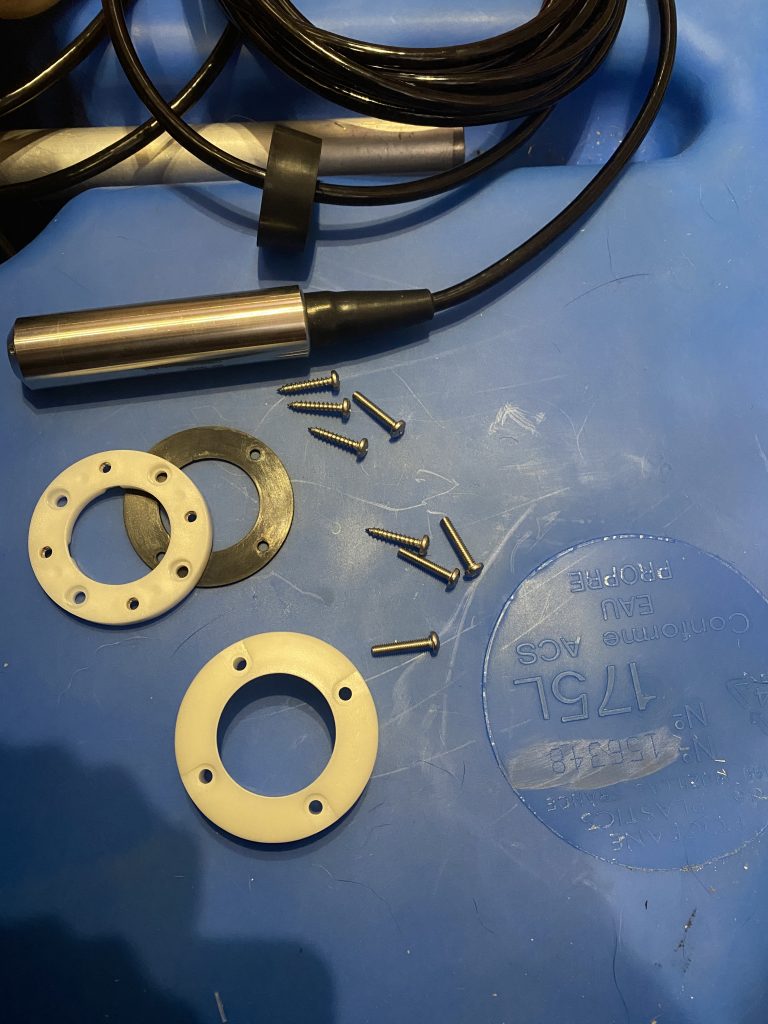
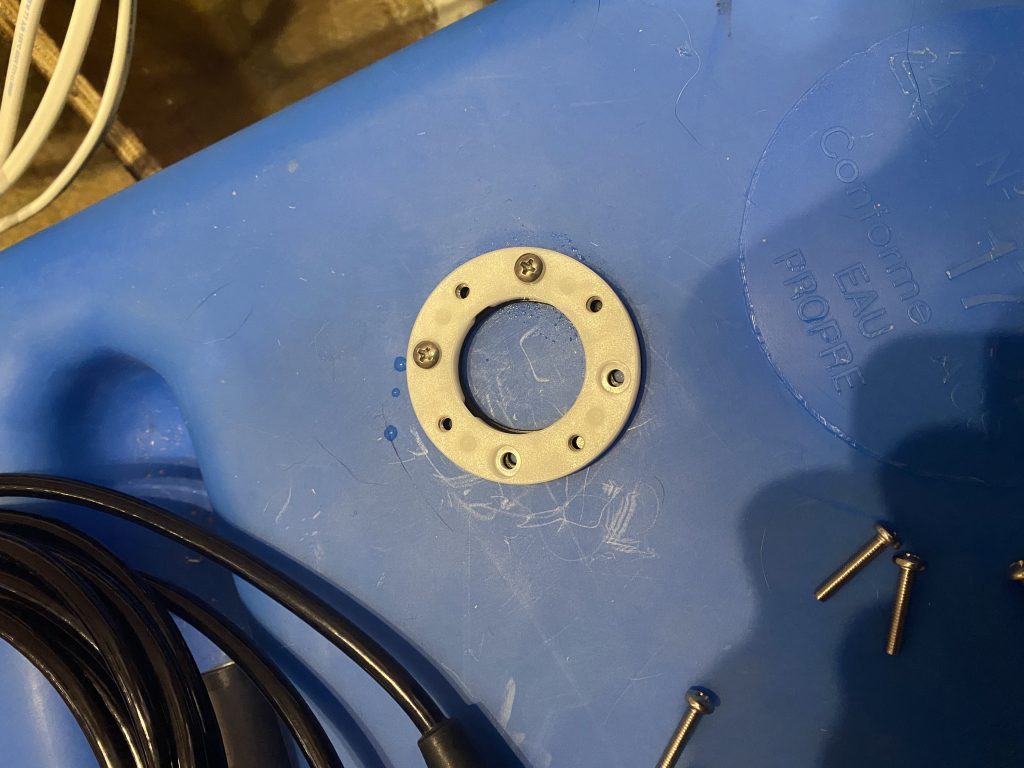
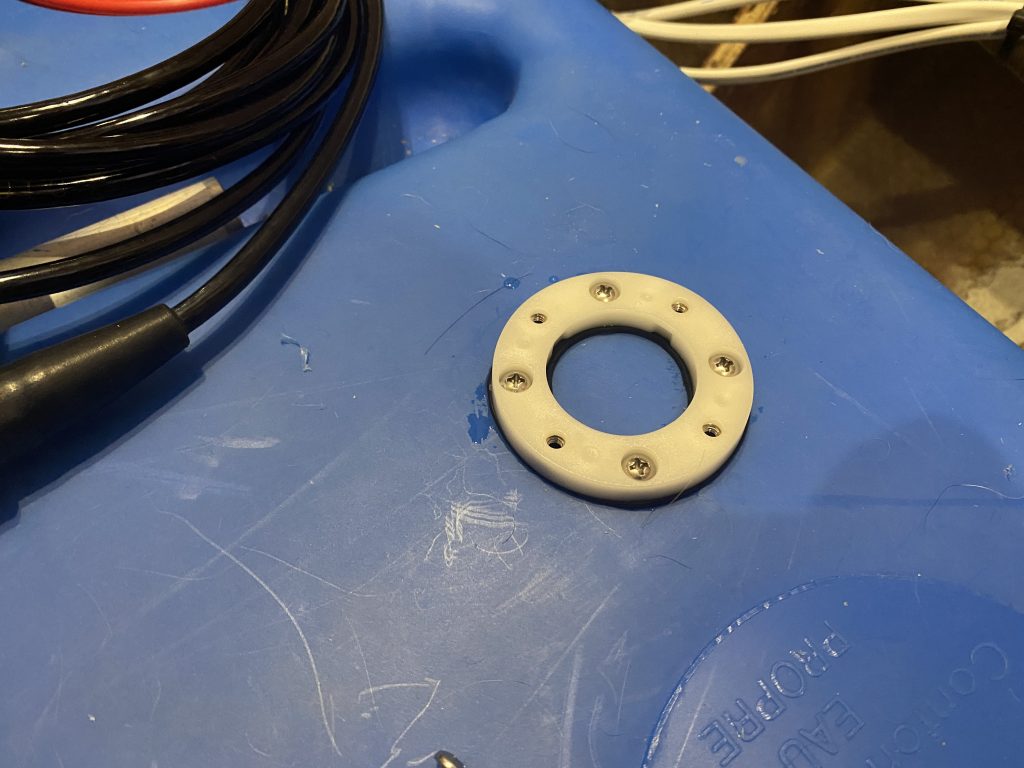
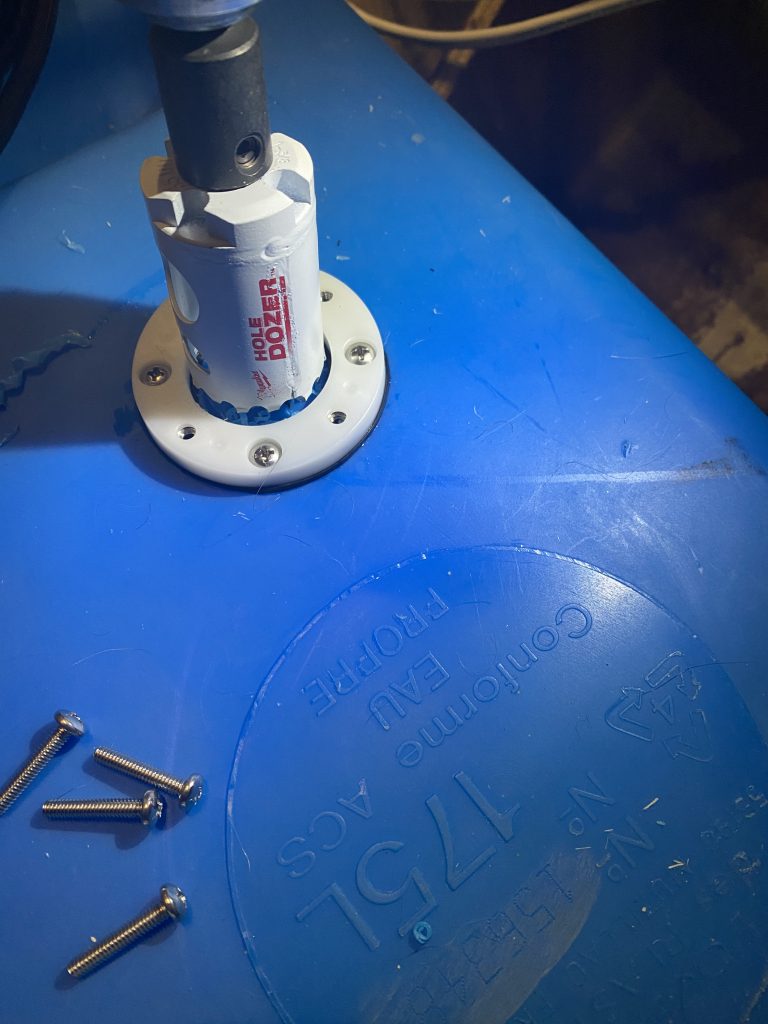
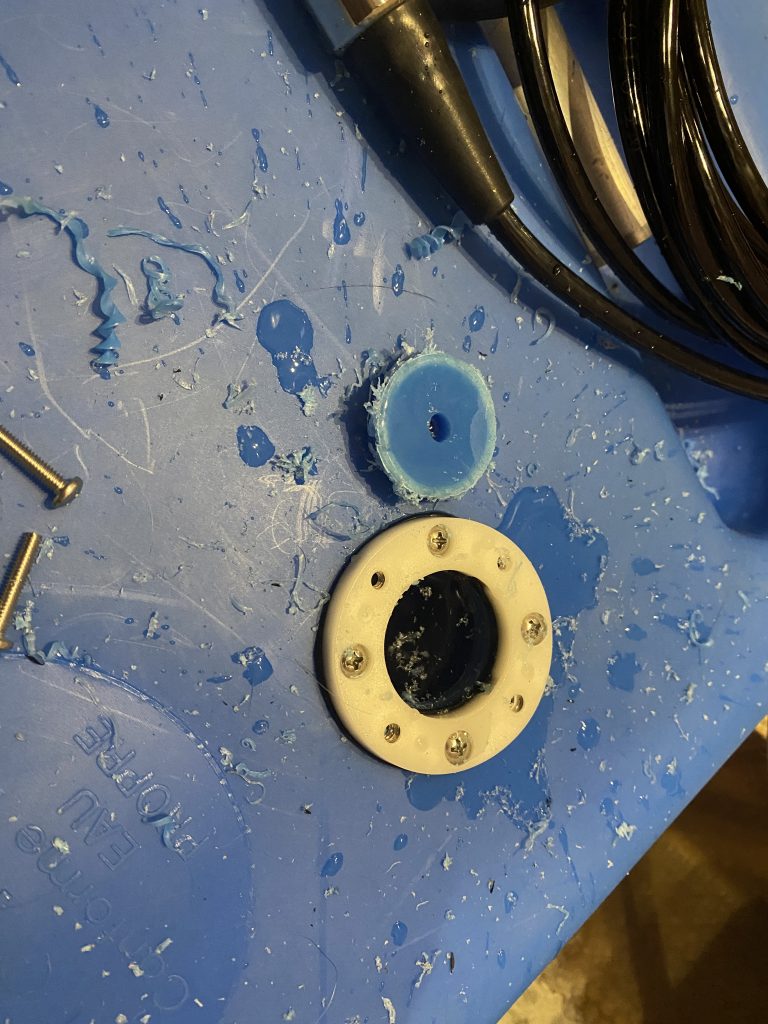
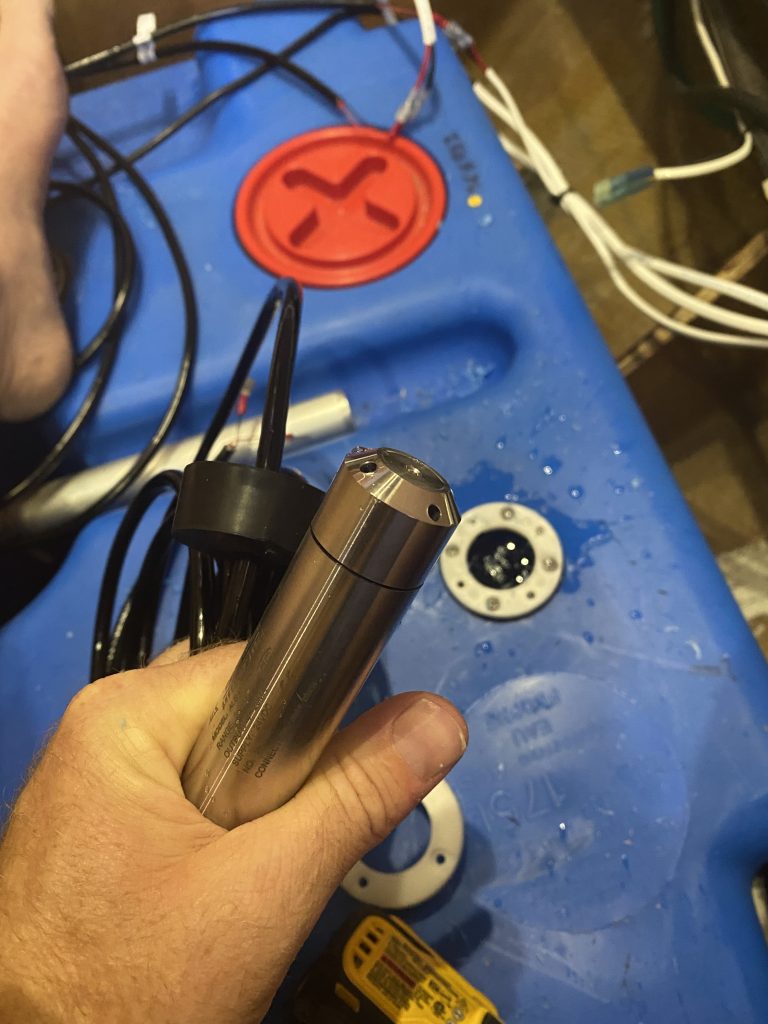
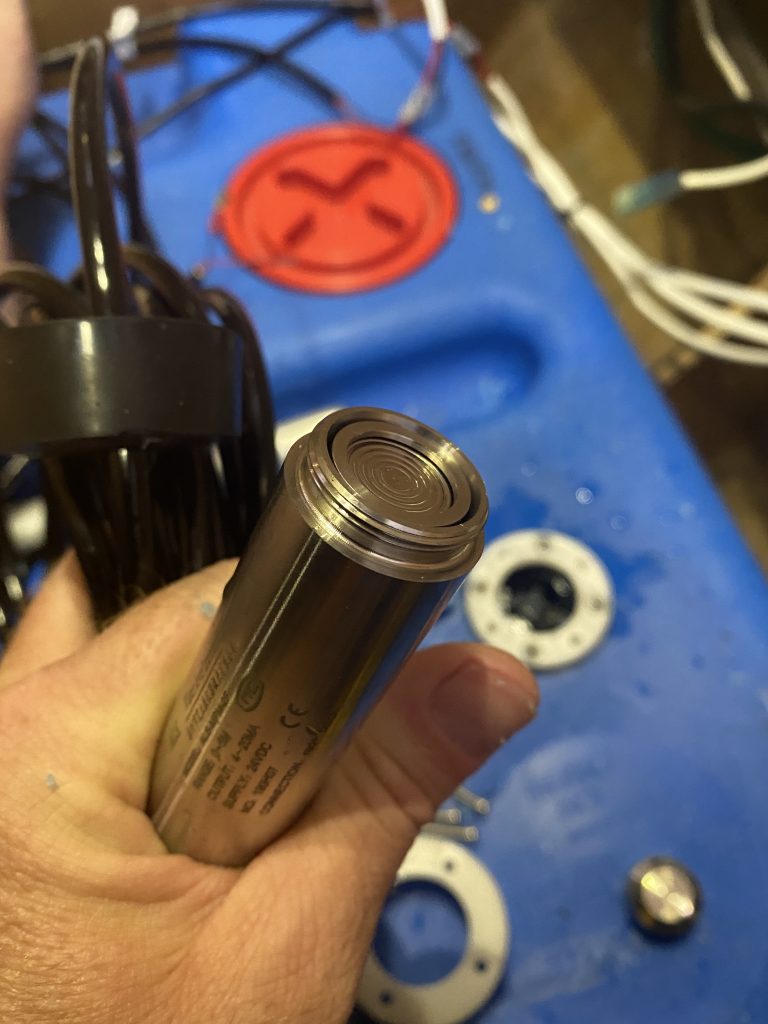
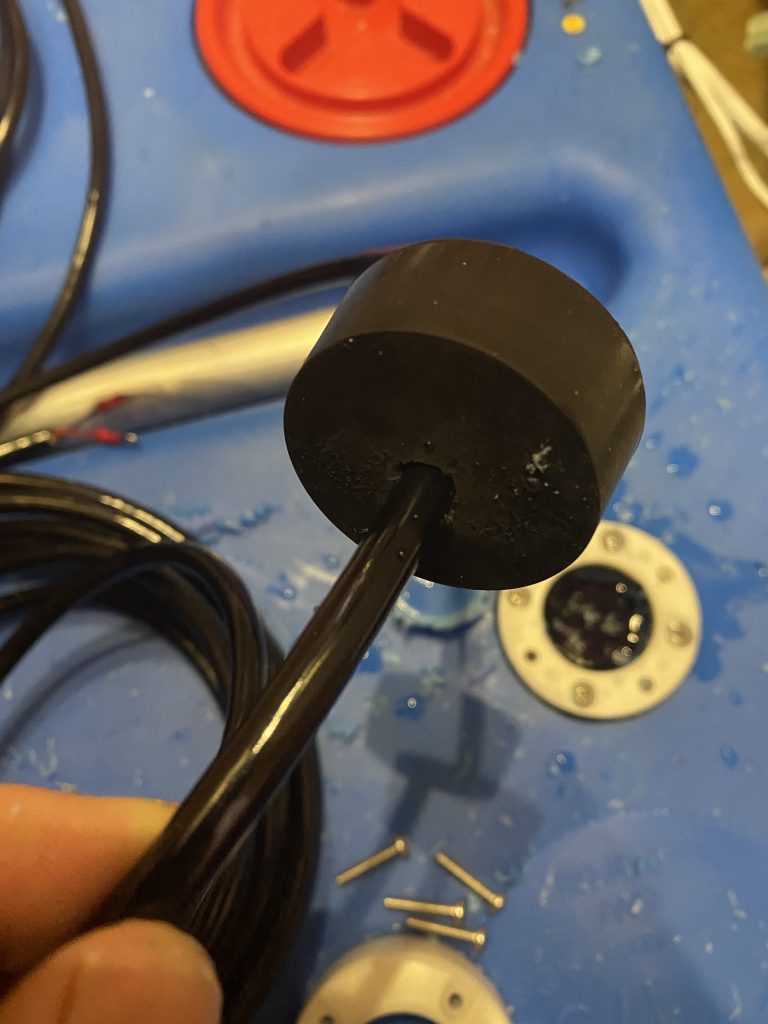
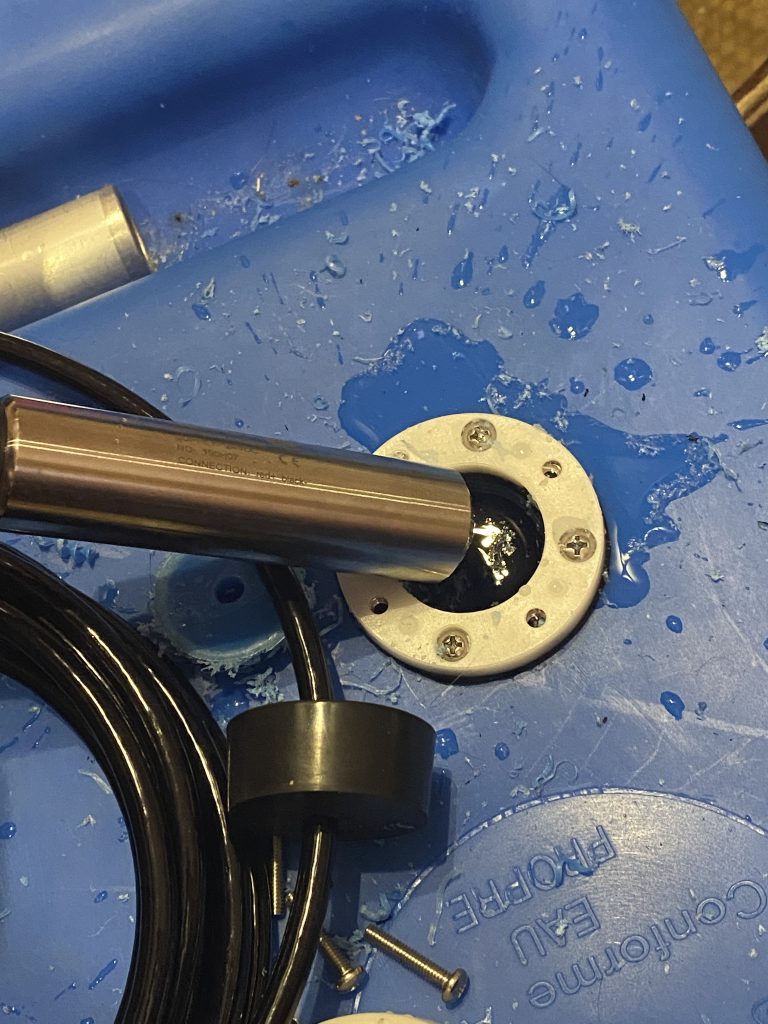
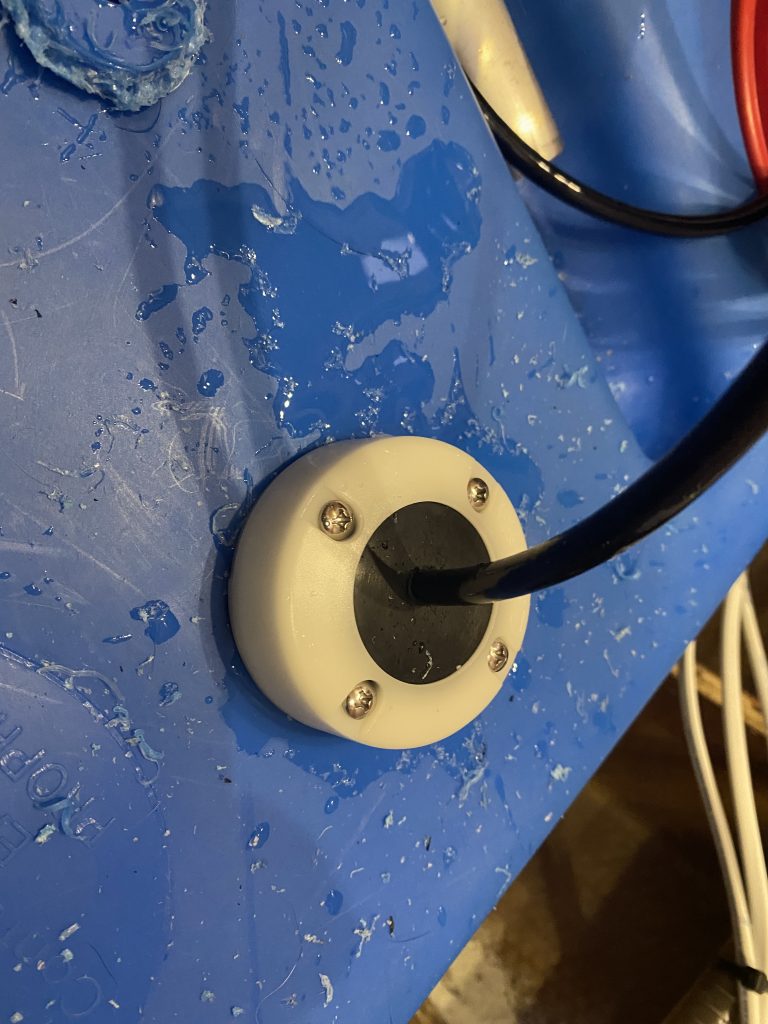
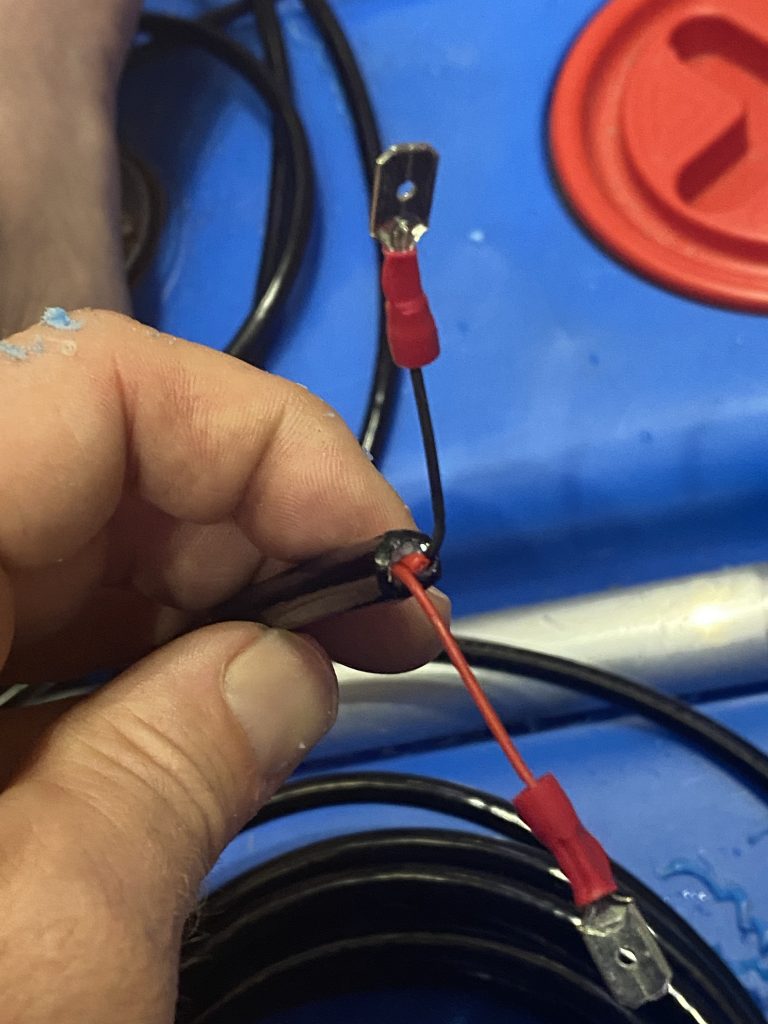
Fuel tanks:
1. Screw the two bushings together to reduce the size and allow for the aluminum gland to be connected.
2. Thread the cable through the gland.
3. Remove the existing fuel sensor.
4. Drop the sensor into the tank so it lays on the bottom and there you go!
I used the -yellow- Teflon sealing tape to seal all my threads.
Cerbo Configuration
The sensors are current sensors.
You will need to calibrate for a full tank and and empty tank.
Set the mA seen for full and empty
Note these numbers somewhere so you can re-input them if something goes sideways with the Cerbo.
Set the name of the tank and the type of fluid being measured.
Wiring Diagram
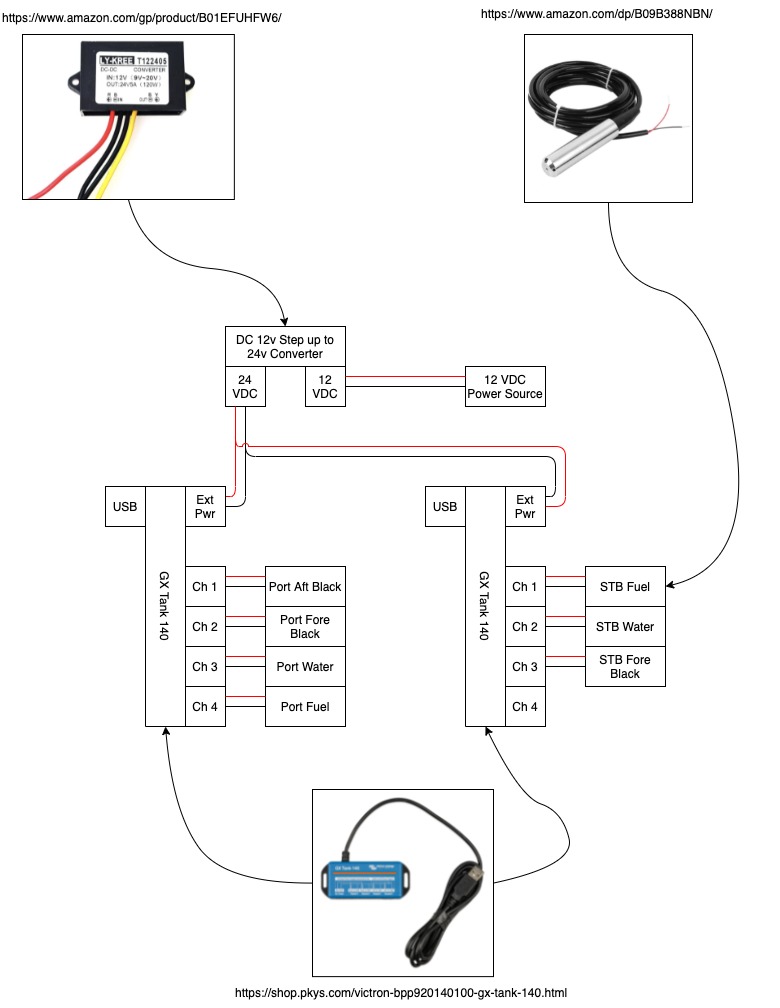
* Note / Revision!
After over 2 years of experimentation, I have determined that the factory WEMA senders, for fuel at least, are adequate when connected to the Cerbo resistive tank inputs.
The issue I came across was that the pressure based sensor submerged in the tank was sensitive to, well, pressure!
We found that the air-vent on the fuel tanks was a little undersized. This vent is designed to allow air to escape the tank while the fuel goes in or comes out. During fueling the tank would become slightly pressurized and the pressure sensor would show 100% full when the tank was really only 80-90% full. We came to mistrust it and no-one needs that.
Here is an updated drawing. We have not, ourselves, gone back to the factory WEMA sensors on the freshwater tanks yet as the pressure-based sensors have been very accurate so far.
This update/revision should remove some costs from the overall project. Do note that it is advised that you run fresh wires from each of the existing WEMA senders to the Cerbo. I used 16AWG wire and that has so far been adequate.
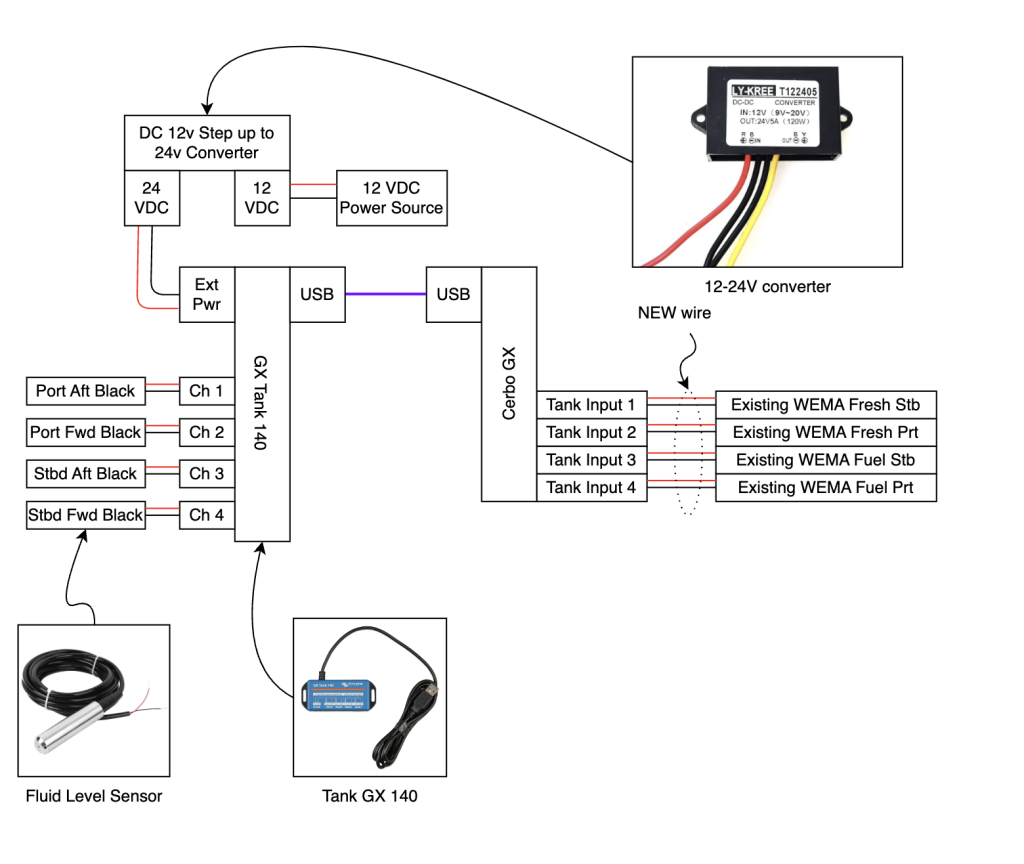



2 Comments
Hello and thanks for the great article!
I am soon implememting this but it just struck me that I cannot put this sensor in my petrol tank! (We have a catamaran with two petrol outboards and a single petrol tank)
What would you do if you had to measure petrol level (other than look at the ma ual gauge that is!!)
Also would put one in our diesel tank but I feel uneasy about it. The specs calls for water only and well electricity in a flamable liquid… not sure! What is your take on it?
Aaaand lastly the thing that seals the cable: you mention its no good for a diesel tank – why so? And have you used something else?
Cheers and thanks again!
Patrick
I am soon implememting this but it just struck me that I cannot put this sensor in my petrol tank! (We have a catamaran with two petrol outboards and a single petrol tank)
> I cannot comment on using these sensors on a petrol other than to NOT do this as petrol is explosive.
What would you do if you had to measure petrol level (other than look at the manual gauge that is!!)
> the catamaran I am on has a big enough “hole” for the sensor that I can dip the tank with a ruler to double-check the level.
Also would put one in our diesel tank but I feel uneasy about it. The specs calls for water only and well electricity in a flammable liquid… not sure! What is your take on it?
> Do NOT use this method in a gasoline tank.
Aaaand lastly the thing that seals the cable: you mention its no good for a diesel tank – why so? And have you used something else?
> We have been using this method of sealing on the diesel tank for some time now. It has been working.